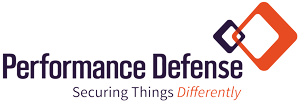In the ever-evolving landscape of defense strategy and preparedness, the resilience of supply chains continues to be a critical focal point for the defense industrial base (DIB).
As the geopolitical and technological environments continue to shift, the need for robust and adaptive supply chain systems has never been more pressing. In fact, the need was highlighted in the Department of Defense’s (DoD) recently published National Defense Industrial Strategy (NDIS). By exploring the following challenges, innovations, and strategic considerations, we can better understand the vital role that resilient supply chains play in ensuring the strength, agility, and readiness of our defense forces.
Challenges
Raw Materials Shortage
The occurrence of raw material shortages within the DIB can be attributed to a combination of factors, including geopolitical tensions, disruptions in global supply chains, and increased demand for specific materials.
The Ukraine war sheds light on the West’s production constraint, especially when it comes to missiles and the technologies that defend against them. Today’s weapons are exceedingly complex, often requiring thousands of parts. “We are supplied by companies with their own supply chains, which in turn have their own supply chains, which have their supply chains, till it gets right down to the mine that digs up the basic resources,” said Eirik Lie, President of the Defence division at Konsberg Defence and Aerospace. A continued labor shortage of niche skills exacerbates the issue.
This impacts not only the timely production of defense systems but also the overall readiness and capability of the armed forces. Delays in manufacturing, increased costs, and compromised quality can hinder the development and deployment of critical defense assets.
Regulatory Hurdles
The DoD faces significant regulatory and compliance hurdles within its intricate supply chain, often stemming from a complex web of federal regulations, security protocols, and international trade restrictions. These hurdles can lead to delays in procurement processes, increased administrative burdens, and challenges in ensuring compliance with a multitude of standards.
Additionally, the need to adhere to security protocols and International Traffic in Arms Regulations (ITAR) restrictions further complicates the sourcing and movement of materials, particularly those with sensitive applications in defense systems.
The consequences of regulatory and compliance hurdles within the DoD’s supply chain are far-reaching and can impact both the efficiency and effectiveness of defense operations. Delays in the acquisition of critical components can hinder the timely deployment of defense systems, compromising readiness and national security. The administrative complexities associated with navigating a labyrinth of regulations can also increase costs and divert resources from other essential areas.
Custom Component Obstacles
The unique demands for customized components, stringent quality standards, and the need for specialized technologies often result in a complex and intricate supply chain ecosystem. This complexity introduces challenges in forecasting, procurement, and logistics, as the DoD must navigate a vast network of suppliers and contractors to source and integrate highly tailored components for a wide array of defense applications. The constant evolution of defense technologies further amplifies these challenges, as customization requirements frequently change to align with emerging threats and advancements in military capabilities. Customized components often involve higher production costs, while the intricacies of managing a vast network of suppliers can lead to delays and uncertainties.
Plans for Improvement
To mitigate these challenges and ensure future resilience, the DoD can implement strategic measures to diversify the sources of raw materials. Investing in domestic production capabilities and fostering collaboration with allies are also other ways in which we can create a more robust and redundant supply chain. Additionally, the DoD can leverage advanced technologies such as predictive analytics to anticipate potential shortages, allowing for proactive management and strategic stockpiling of critical materials.
In regard to the regulatory obstacles, the DoD can consider streamlining and harmonizing regulatory processes, fostering collaboration with industry stakeholders to create standardized compliance procedures, and leveraging technology for more automated and efficient regulatory compliance.
Additionally, the DoD can address the customization and complexity challenges by exploring strategies such as standardizing certain components where feasible, implementing modular designs that enhance interchangeability, and leveraging advanced technologies like additive manufacturing for more agile and customized production. Fostering closer collaboration with industry partners to align expectations and specifications can also contribute to a more streamlined and adaptable supply chain, ultimately enhancing the DoD’s capacity to respond rapidly to evolving defense needs.
Performance Defense Provides the Resiliency You Need
As a trusted solutions and agile services provider for the DoD, Performance Defense stands poised to make significant contributions towards fostering on-time deployment of mission-critical solutions. Our expertise in the rapid development of innovative and custom technologies and understanding of supply chain security makes us a premier partner. Learn more about how we can support your next mission-critical program.





